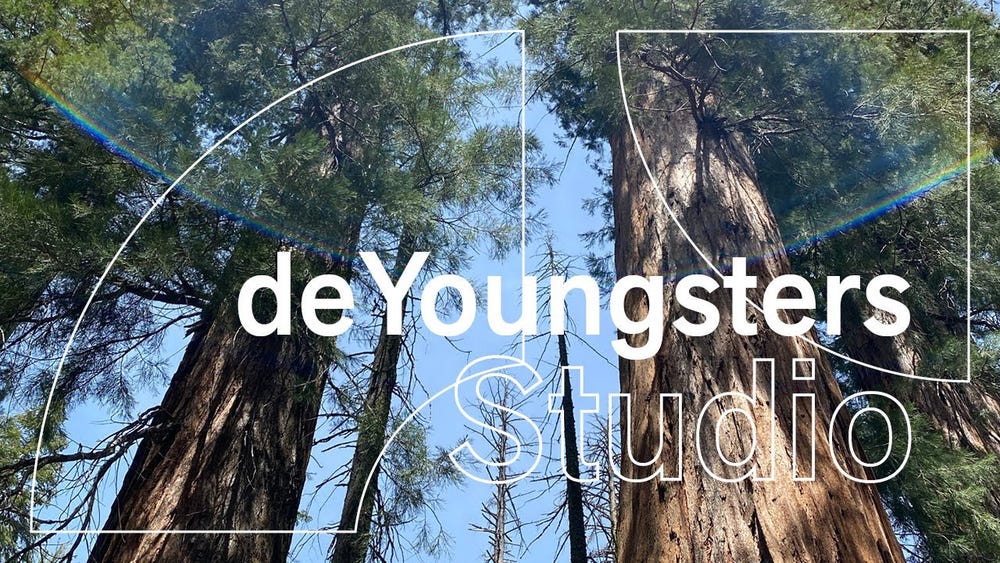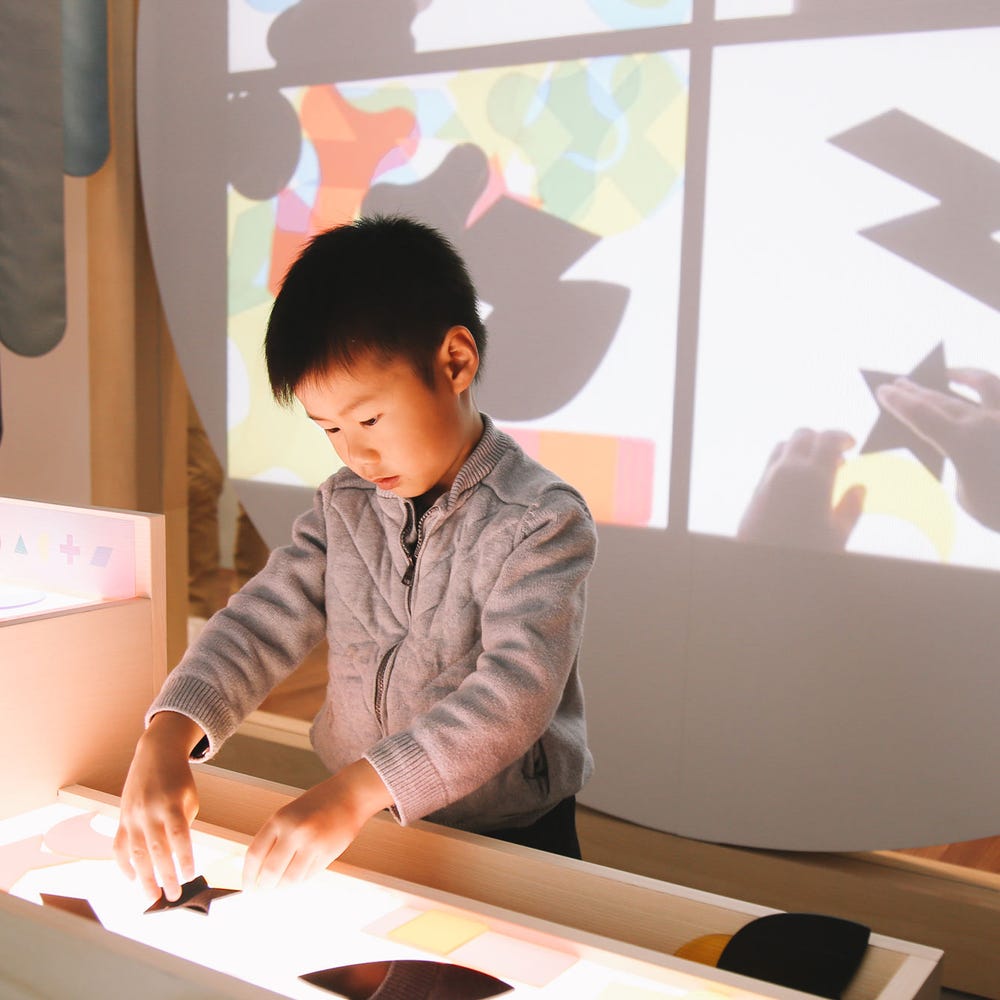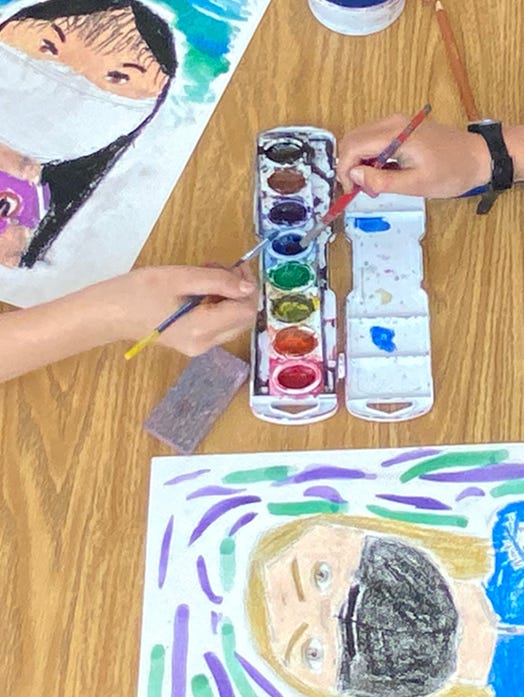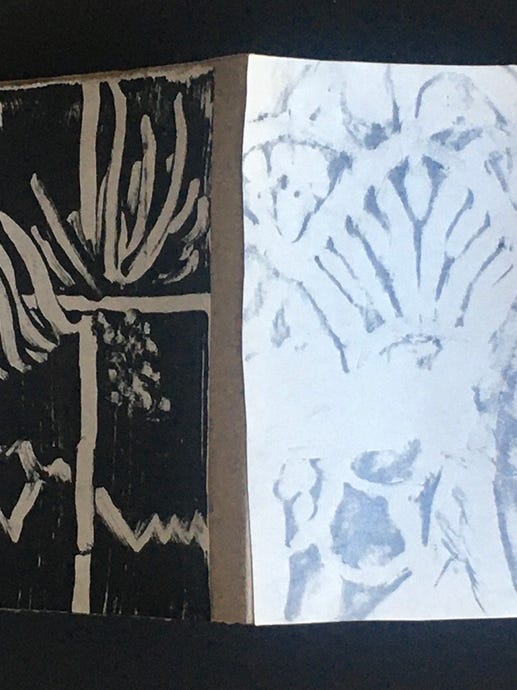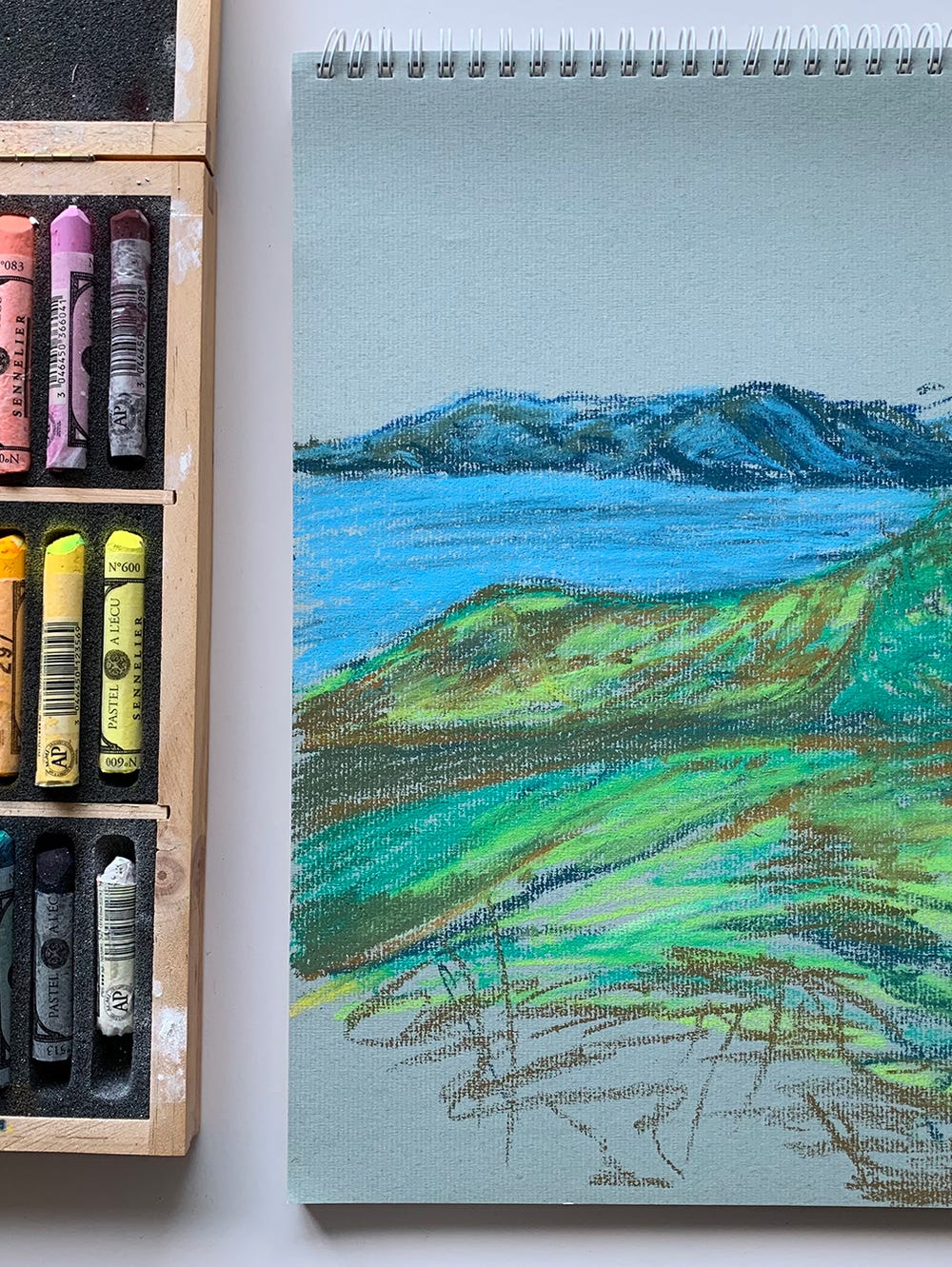Inspired by Chiura Obata, Untitled (Redwood Tree Spire, Alma), ca. 1925, create a three-part drawing that documents your in-depth exploration of a tree using observation, notation, and sketching.
To learn more about redwood trees, visit the California Academy of Sciences’ Giants of Land and Sea exhibit.
Materials
- Backpack and sun hat
- Long, narrow piece of paper (6 x 18 in. works well), folded into three sections
- Pencil, eraser, and sharpener
- Colored pencils
- Clipboard
- Binoculars and magnifying loop (optional)
- String plus ruler, or tape measure
- Tree ID book
Questions to Consider
- What do you notice about your tree?
- What do you see when you look up at your tree?
- What sounds do you hear?
Steps
1. Find a tree: pack a backpack with the activity materials, don a sun hat, walk outside, and choose a tree to observe for this activity.
2. Look up: draw the top of the tree on the first page of your book. Add notes, colors, and details about the sky, the birds that you see or hear, and other things you notice about the top of your tree.
3. Look straight ahead: notice the width and the bark on the tree. How could you measure the circumference of the tree? How does the bark on your tree feel? How could you draw the texture of the bark? (Hint: use wiggly lines and different colors.)
On the second page, draw the texture of the tree bark using colored pencils. Write texture words and observations next to your drawing.
4. Look down: on the third page, draw the tree’s roots as they enter the ground, then observe the ground and plants that surround the tree. Add color and notations to your drawing.
5. Draw a leaf: pick up a leaf that has fallen from the tree. Make a scientific sketch in an empty area of your book, use a magnifying loop to observe details. An accurate drawing describes the size, shape and unique elements of your leaf. Use colored pencils to add more detail to your sketch.
A Scientific Sketch Is Accurate, Big, Colorful, Detailed, and Explained
Reflect
- What did you learn about your tree?
- What story does your tree tell?
Share
Share your scientific observations with the California Academy of Sciences through the Community Science Program. Community scientists can add their observations of nature where they live, to a database that helps scientists study biodiversity.
We would love to see what you create! Email pictures of your artwork to families@famsf.org or tag us on any social platform with #deyoungsters.
